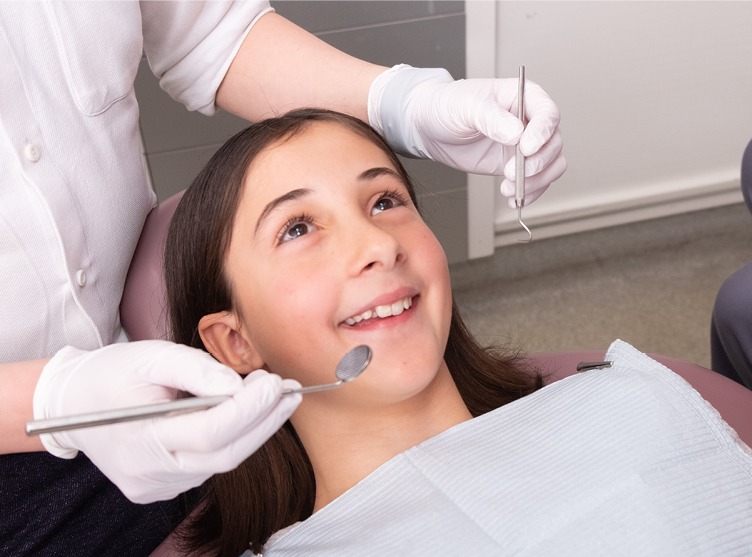What Does Legacy Orthodontics Do?
What Does Legacy Orthodontics Do?
Blog Article
Legacy Orthodontics for Beginners
Table of ContentsHow Legacy Orthodontics can Save You Time, Stress, and Money.Legacy Orthodontics Things To Know Before You Get ThisSome Ideas on Legacy Orthodontics You Need To Know4 Simple Techniques For Legacy OrthodonticsUnknown Facts About Legacy Orthodontics
At Advanced Orthodontics, we offer individuals with a alternative therapy experience. In addition, we supply adjustable treatment timetables, flexible repayment alternatives and an enjoyable, delightful experience. leesburg braces. Call ( 480) 357-4900 today for more details and routine a consultation.An orthodontist is a dentist trained to identify, stop, and deal with teeth and jaw irregularities. Orthodontists function with people of all ages, from kids to adults.
Malocclusion, or misaligned teeth, can bring about oral concerns, consisting of tooth decay, gum tissue disease, and challenging or painful chewing. Yet not everyone is born with straight teeth. If you have a negative bite or big spaces in between your teeth, you may intend to speak with a dental practitioner specializing in orthodontic treatment.
Top Guidelines Of Legacy Orthodontics
( Photo Credit Rating: DigitalVision/Getty Images) Orthodontists use fixed and detachable oral gadgets, like dental braces, retainers, and bands, to alter the placement of teeth in your mouth. Orthodontic treatment is for dental problems, including: Misaligned teethBite problems, like an overbite or an underbiteCrowded teeth or teeth that are as well far apartJaw misalignmentThe goal of orthodontic treatment is to enhance your bite.
A healthy bite guarantees you can eat, chew, and speak properly. While you may think about orthodontists as generally for children or teenagers who need dental braces, they can remedy dental problems at any kind of age. Orthodontists participate in college, dental college, and orthodontic institution. After graduation, they spend 2 or 3 years in an orthodontic residency program.
All orthodontists are dentists, but not all dental experts are orthodontists. Orthodontic residency programs provide extensive, concentrated direction for oral experts. They concentrate on 2 areas: Just how to appropriately and securely move teeth Exactly how to effectively direct advancement in the teeth, jaw, and faceOnce an orthodontist has completed training, they have the choice to become board certified.
What Does Legacy Orthodontics Do?
Misalignment, or malocclusion, is the most usual reason people see an orthodontist. It is hereditary and is the result of dimension differences in between the top and lower jaw or between the jaw and teeth. Malocclusion leads to tooth congestion, a twisted jaw, or irregular bite patterns. Malocclusion is generally treated with: Your orthodontist connects metal, ceramic, or plastic square bonds to your teeth.
Some individuals require a headwear to help relocate teeth right into line with pressure from outside the mouth. A retainer is a custom-made tool that keeps your teeth in area.
They can develop added area in the mouth without having to draw teeth. Orthodontists make use of wires, surgical screws, or plates to support your jaw bone.
You might need to see an orthodontist if you have: Crowding or not sufficient space for every one of your teethOverbite, when your top teeth come your base teethUnderbite, when your bottom teeth are too far forwardSpacing or problems with gapsCrossbite, which is when your top teeth fit behind your base teeth when your mouth is closedOpen bite or a vertical gap in between your front bottom and top teethMisplaced midline, when the facility of your base and top teeth don't line up Dealing with an oral malocclusion can: Make biting, eating, and talking easierImprove the symmetry of our face and your overall appearanceEase discomfort from temporomandibular joint conditionsSeparate your teeth and make them simpler to clean up, helping prevent dental cavity or cavities It's usually a dental practitioner who first notices misaligned teeth during a regular examination.
Getting My Legacy Orthodontics To Work

Throughout your very first orthodontic appointment, you'll likely have: A dental examPhotos taken of your face and smileDental X-raysPanoramic (360 degree) X-rays of your face and headImpressions to produce mold and mildews of your teethThese examinations will certainly aid your orthodontist recognize how to continue with your treatment. clear braces. An orthodontist is a dentist who's had training to treat your teeth and jaw
Orthodontists might do surgical procedure, exams,X-rays,and more to aid you obtain a more comfy, much healthier smile. An orthodontist is concentrated on your bite, so something like a chipped tooth would certainly be handled by a dental practitioner. Orthodontists are dental experts but not all dental experts are orthodontists. Orthodontists are focused on your bite, or the method your teeth meshed, and the straightness of your teeth.
Ever asked yourself how stars constantly appear to have perfectly lined up teeth? The solution typically depends on the skilled hands of an orthodontist. What exactly does an orthodontist do? Orthodontists are dental professionals who concentrate on dealing with irregularities in the teeth and jaws. Their proficiency exceeds simply creating a stunning smile; it reaches boosting your total oral health and wellness and feature.
Unknown Facts About Legacy Orthodontics

While dental braces are the most generally identified orthodontic therapy, orthodontists have a varied toolkit at their disposal. The particular approach selected depends on the seriousness of the case, the client's age, and private choices. These reliable braces make use of a system of braces adhered to the teeth and attached by cables.
Clear aligners, like Invisalign, are a prominent choice for patients seeking an extra very discreet treatment choice. These detachable trays are personalized to considerably change the teeth's placement. Headgear might be used along with braces or aligners to apply added targeted pressures, particularly for remedying jaw disparities. In instances of slim jaws, palatal expanders can be made use of to develop space for proper tooth positioning.
Report this page